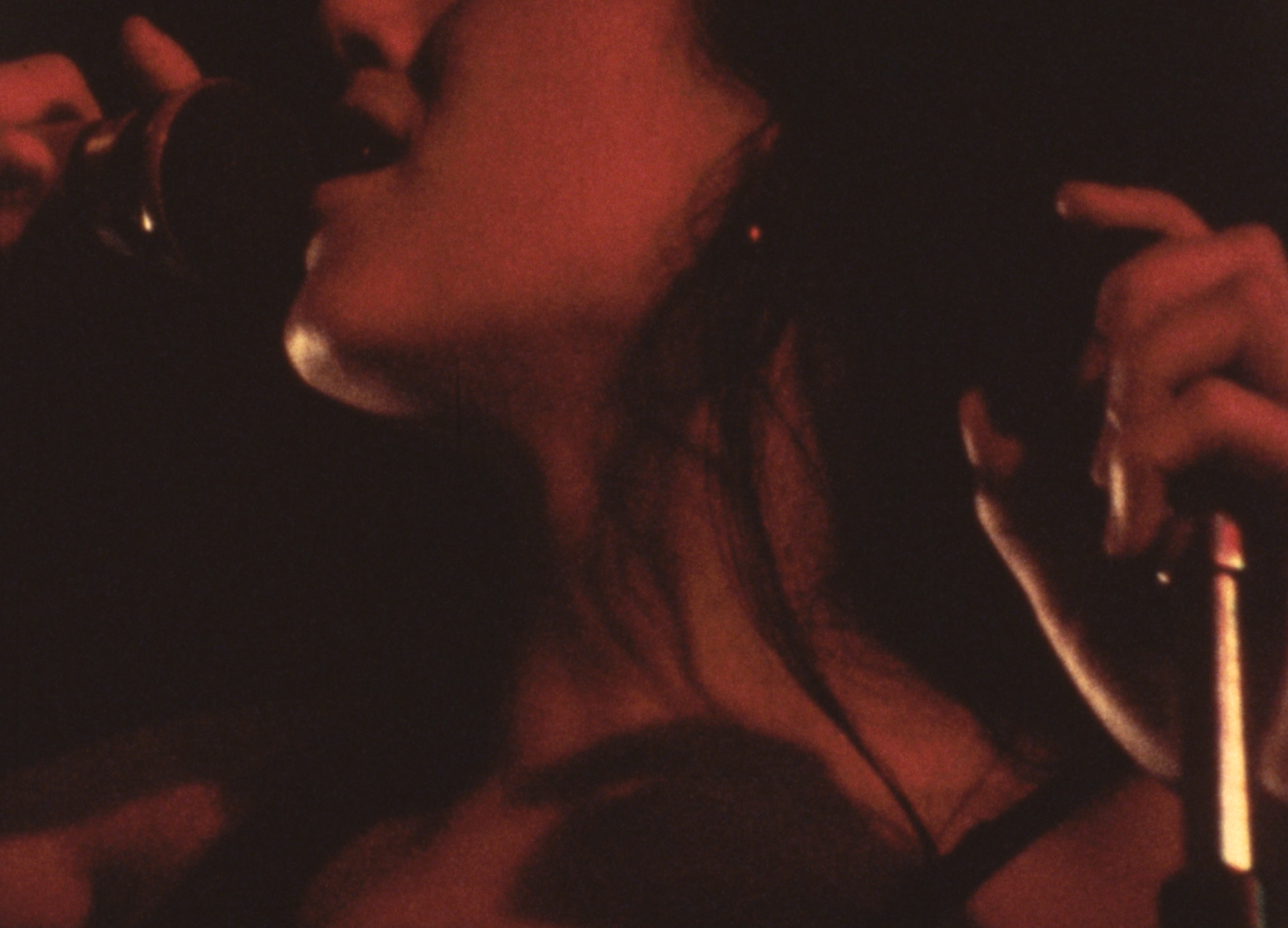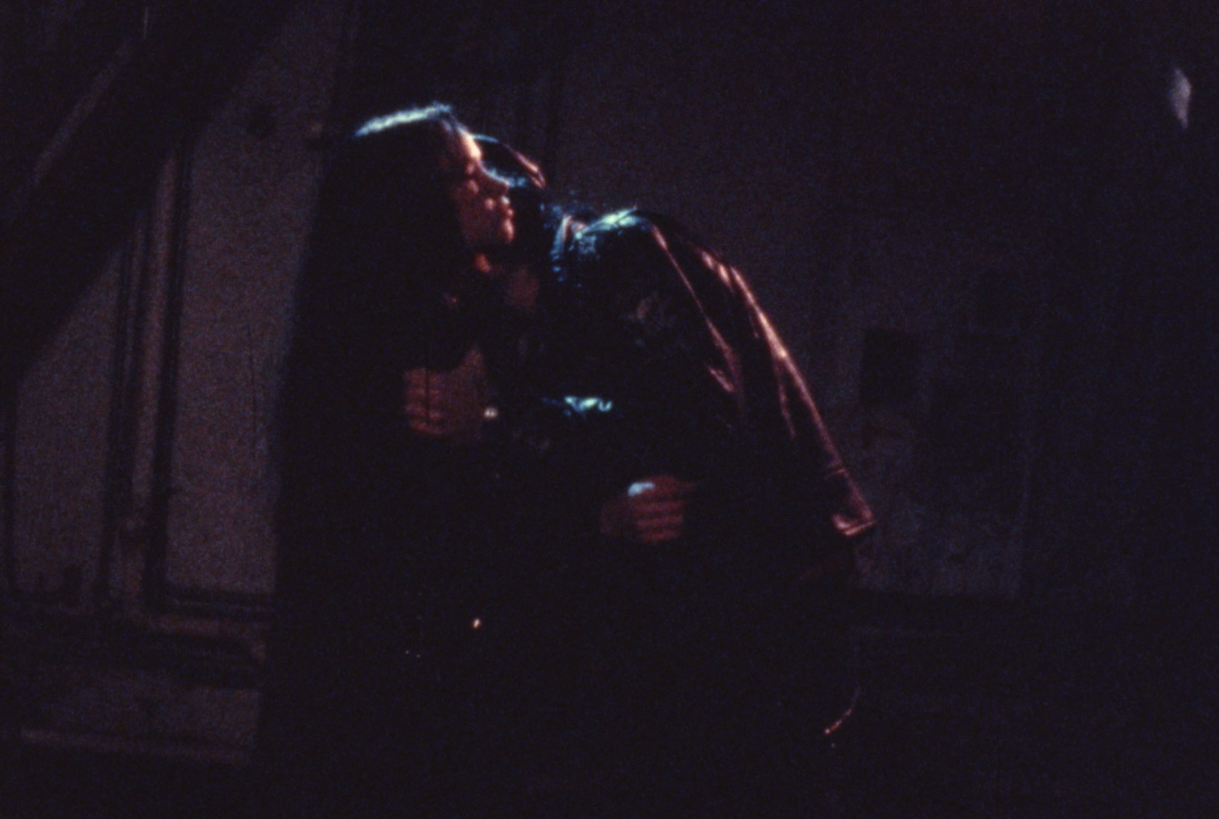Her Dog Satan and the DIY Art Scene: An Interview with Scott Conn
Scott Conn is an independent filmmaker who's worked in and around the Austin film scene for decades. This Saturday, Texas Archive of the Moving Image will be screening his short film Her Dog Satan at Eastside Cinema, along with a handful of other rarely-seen punk shorts and Austin-made cult films. Conn's experimental short film takes viewers on a not-so-average night of the Austin punk scene as musicians jam out, friends play pool, and a vampire prowls around the club.
In advance of the screening, Hyperreal Film Journal sat down with Conn to talk DIY filmmaking, the provocative power of punk, and the responsibility of capturing firsthand, lived experiences of Austinites before those stories get lost to time.
Hyperreal Film Journal (HFJ): So, in preparing for the screening, was this the first time you'd seen Her Dog Satan since you made it?
Scott Conn (SC): I haven't seen it in maybe 30 years since I went to the Texas Archive of the Moving Image to get it transferred and they eventually came to me about this screening. But I haven't seen it since I originally put it out on 16 millimeter.
Her Dog Satan
HFC: How did it feel rewatching it after so long?
SC: it was fun. It was funny. It was a little, "Oh, wow, I did that." But some of it's funny because it's so dated in a lot of ways. Some of the conversation around it for the screening calls it a thriller, which kind of implies that it's a definitive narrative. It was really more of an experiment.
I made it with the idea of not waiting to come up with some brilliant idea or something. I just wanted to crank out a movie because I wanted to make something. I had the film stock and I just wanted to make something and I got a few resources and friends together. I storyboarded a goofy idea that's just a regular night, go into these clubs and bars, see bands, and then afterwards continue to hang out and watch movies. That's basically the framework of any kind of narrative that might be there. And then I just spiced it up with somebody getting attacked by a vampire amongst the crowd.
HFJ: I wanted to talk about the concert footage in there. Was that part of the storyboards from the beginning? These weren't shows that you just happened to be around recording, right?
SC: That was assembled for the movie, those were all friends. A good friend of mine, Pam Peltz, did the music. None of that was synchronized. All of that was just, "Okay, play." There's no real plan, I storyboarded it with the idea of making a silent movie. So no titles or credits are needed to move it along. It was all arranged just for the shoot.
Her Dog Satan
HFJ: Looking back on it now, do you think Her Dog Satan is still pretty representative of your aesthetics as a filmmaker?
SC: While making that film, I utilize flash frames and fogged edges, all of those visual aspects. And that was part of the experiment of using a lot of the footage that was soft focus or dark. It was very much an exercise in trying to create something out of what I had.
HFJ: I saw that this was filmed at the Cannibal Club, and I was looking into it and the club closed less than a year after this was made. It made me think about how so much of filmmaking is about capturing a moment in time. And here you were, capturing this specific moment in Austin history at a place that doesn't exist anymore.
SC: I didn't think it in those terms. I had just recently worked on the movie Slacker, which is very much a time capsule. Almost no place in that film exists anymore. Recognizably, anyway. The murder scene in Her Dog Satan, that was behind a cafe (Les Amis Cafe) that's a Starbucks now. But they were just places I had access to. It wasn't, "Hey, I'm gonna preserve this place."
HFJ: Yeah, it feels like every year, Austin changes a bit more and these places are so vibrant. They don't go away but they kind of changed. And I was just wondering if you had any feelings on how Austin has changed since you made this and what you feel is happening in the DIY art space. Basically, does Austin still have a chance?
SC: I think they're just in smaller and smaller pockets because of affordability. There's places that I don't know about because I don't go out as much and I'm not part of the scene. But I know that there are places like The 13th Floor run by people that are very into preserving that sensibility. But as far as creativity, a lot of creativity left town because they simply can't afford to live and be creative. There might be a lot of artists, but they can't sell their stuff here. That's the way it used to be. Austin used to be so cheap. A lot of artists and musicians moved here. It was tough to make a living, but it was cheap. There's a few entities that are trying to preserve what was left, but it is becoming less and less recognizable.
Her Dog Satan
HFJ: I've noticed there's a bit of an overlap with the DIY punk scene and the filmmaking scene. This is a short film about the punk scene, so do you feel like there's a significant overlap and if so, why?
SC: Punk rock originally, at least in Austin, was very much a DIY scene. And then a film like Slacker is like, "Let's not wait for funding. Let's just do it and figure it out in the cut or in the edit or something." Punk was originally there to provoke, to get a reaction. It maybe looks scary or serious, but there's also underlying humor and commentary under that rough exterior, and just a need to shout out. Like Her Dog Satan, just in the name, it doesn't have anything to do with the film itself. It's just a name that evokes things. And just like the Butthole Surfers, it's like, what the hell is that? It just provoked something. There's very much an overlap in that kind of experiment.
But I also did a documentary [Dirt Road to Psychedelia] and it was not meant to provoke. It was meant to preserve the history of Austin during the '60s. That's one of the early origin stories of Austin. But it's also DIY, I'm not going to wait for funding. I'm going to just start capturing interviews and figure out how to tie those all together.
HFJ: Did you feel a responsibility to capture that history in a way that you felt like other people weren't capturing it properly or from your perspective?
SC: Yeah. Oh, yeah. Especially after I had interviewed some people and they let me in their little circle. And I had let it set for about six months because I had to go off and work and they would ask how the documentary was going. Over time, I saw a greater and greater responsibility, especially once I got the arc down from the beginning to the end. Nobody that I found had put that all together in an arc. I think there's one or two [documentaries] out now, but that didn't exist when I did it.
I did a couple of little practice documentaries before Dirt Road to Psychedelia. And they're not something I'm gonna put out there. I have another documentary that's sitting on a hard drive for a bunch of years that's about the punk rock scene from '77 to '84. Kind of sequel to Psychedelia?
But it's a monumental task. I get these interviews done and I see another step. And it's like, oh, I need to assemble everything. Climb up one hill, and there's another summit. So, to do it again. It's like, I need a producer. I need a researcher. I need that somebody. A few of the people I've interviewed are gone now. So now I feel a responsibility of hearing their story but I need to assemble it in a beautiful way.
HFJ: Making any movie is kind of overwhelming at the start and middle and right up until the end, right?
SC: Yeah, I mean, for Her Dog Satan, It was pure creativity and fun. I used the same Steenbeck flatbed editor that we used on Slacker. I worked on Slacker, helping with the lights and everybody did everything. I would be there looking at the film and editing things together. I wasn't an editor, I was just helping with some of the drudgery of breaking the film apart so it can be assembled. But I use the same flatbed in Her Dog Satan. In the credit, I even thank Rick [Richard Linklater] and Lee Daniel for letting me use their editing equipment. I'd show up at their house, and they're all supportive because I was just doing something wacky and creative.
And then, you know, I was watching a lot of Gothic horror movies and stuff at the time. [Her Dog Satan] is very inspired by Roger Corman. There's an alley scene where I pulled my car and somebody else's car around for their headlights to light the scene. And there's a famous story of him doing that for a scene.
HFJ: Do you have an underrated Corman favorite?
SC: Bucket of Blood is kind of a perfect movie. I would teach that because there is not a moment of wasted time in that film. It's one of the most economically paced films. It's by no means a genius film, but it's very fun and but everything that happens, moves forward. So in a way that applies also to Her Dog Satan. That movie told me, "No, you can make something because it doesn't have to be brilliant. You know, just finish it and if it's not bad or pretty good, it's worth something."






Ziah is the founder and former editor-in-chief of the Hyperreal Film Journal. He can usually be found at Austin Film Society or biking around town.